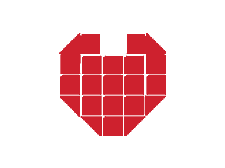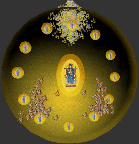Apr 27, 2007
Call for Articles and Net Art
On-line journal Hz is looking for articles on New Media, Net Art, Sound Art and Electro-Acoustic Music. We accept earlier published and unpublished articles in English. Please send your submissions to hz-journal[at]telia.com: Deadline: 25 May, 2007. Hz is also looking for Net Art works to be included in its virtual gallery. Please send your URLs to hz-journal[at]telia.com.
Hz is published by the non-profit organization Fylkingen in Stockholm. Established in 1933, Fylkingen has been known for introducing yet-to-be-established art forms throughout its history. Nam June Paik, Stockhausen, Cage, etc. have all been introduced to the Swedish audience through Fylkingen. Its members consist of leading composers, musicians, dancers, performance artists and video artists in Sweden. For more information on Fylkingen, please visit http://www.fylkingen.se/about or http://www.hz-journal.org/n4/hultberg.html.
12:35 Posted in Cyberart | Permalink | Comments (0) | Tags: cyberart
Mar 15, 2007
NeuroZappingFolks

LX 2.0: Contemporary Online Experiments: NeuroZappingFolks is a non-linear zapping through the Internet, a path leading to the inside of a web of relations, a web that can be explored from one tag to a site, to another tag, to another site... from word to image to word to image. NeuroZappingFolks is then the simulation of a brain lost in the web (lost between servers, but also lost in Internet's double identity: word and image).
00:54 Posted in Cyberart, Research tools | Permalink | Comments (0) | Tags: cyberart
Jan 27, 2007
An Internet virtual world chat room for smoking cessation
Evaluation of an Internet virtual world chat room for adolescent smoking cessation.
Addict Behav. 2006 Dec 19;
Authors: Woodruff SI, Conway TL, Edwards CC, Elliott SP, Crittenden J
The goal of this longitudinal study was to test an innovative approach to smoking cessation that might be particularly attractive to adolescent smokers. The study was a participatory research effort between academic and school partners. The intervention used an Internet-based, virtual reality world combined with motivational interviewing conducted in real-time by a smoking cessation counselor. Participants were 136 adolescent smokers recruited from high schools randomized to the intervention or a measurement-only control condition. Those who participated in the program were significantly more likely than controls to report at the immediate post-intervention assessment that they had abstained from smoking during the past week (p</=.01), smoked fewer days in the past week (p</=.001), smoked fewer cigarettes in the past week (p</=.01), and considered themselves a former smoke (p</=.05). Only the number of times quit was statistically significant at a one-year follow-up assessment (p</=.05). The lack of longer-term results is discussed, as are methodological challenges in conducting a cluster-randomized smoking cessation study.
16:32 Posted in Cybertherapy, Virtual worlds | Permalink | Comments (0) | Tags: cyberart, virtual reality
Jan 07, 2007
From Technological to Virtual Art
Re-blogged from Networked Performance
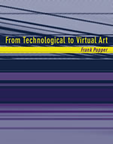
From Technological to Virtual Art by Frank Popper: In From Technological to Virtual Art, respected historian of art and technology Frank Popper traces the development of immersive, interactive new media art from its historical antecedents through today's digital, multimedia, and networked art. Popper shows that contemporary virtual art is a further refinement of the technological art of the late twentieth century and also a departure from it. What is new about this new media art, he argues, is its humanization of technology, its emphasis on interactivity, its philosophical investigation of the real and the virtual, and its multisensory nature. He argues further that what distinguishes the artists who practice virtual art from traditional artists is their combined commitment to aesthetics and technology. Their "extra-artistic" goals -- linked to their aesthetic intentions -- concern not only science and society but also basic human needs and drives.
23:34 Posted in Cyberart | Permalink | Comments (0) | Tags: cyberart
Sensorium: Embodied Experience, Technology, and Contemporary Art
Re-blogged from Networked Performance
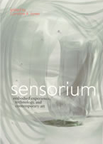
The relationship between the body and electronic technology, extensively theorized through the 1980s and 1990s, has reached a new technosensual comfort zone in the early twenty-first century. In Sensorium, contemporary artists and writers explore the implications of the techno-human interface. Ten artists, chosen by an international team of curators, offer their own edgy investigations of embodied technology and the technologized body. These range from Matthieu Briand's experiment in "controlled schizophrenia" and Janet Cardiff and Georges Bures Miller's uneasy psychological soundscapes to Bruce Nauman's uncanny night visions and François Roche's destabilized architecture. The art in Sensorium--which accompanies an exhibition at the MIT List Visual Arts Center--captures the aesthetic attitude of this hybrid moment, when modernist segmentation of the senses is giving way to dramatic multisensory mixes or transpositions. Artwork by each artist appears with an analytical essay by a curator, all of it prefaced by an anchoring essay on "The Mediated Sensorium" by Caroline Jones.
In the second half of Sensorium, scholars, scientists, and writers contribute entries to an "Abecedarius of the New Sensorium." These short, playful pieces include Bruno Latour on "Air," Barbara Maria Stafford on "Hedonics," Michel Foucault (from a little-known 1966 radio lecture) on the "Utopian Body," Donna Haraway on "Compoundings," and Neal Stephenson on the "Viral." Sensorium is both forensic and diagnostic, viewing the culture of the technologized body from the inside, by means of contemporary artists' provocations, and from a distance, in essays that situate it historically and intellectually.
Copublished with The MIT List Visual Arts Center
23:27 Posted in Positive Technology events | Permalink | Comments (0) | Tags: cyberart
Dec 30, 2006
Mind and brain artwork
via mind hacks

have a look at this wonderful collection of mind and brain artwork, collected by the author of the Italian website PsicoCafé
Link to PsicoCafé image gallery.
Link to PsicoCafé (Italian)
12:55 Posted in Cyberart | Permalink | Comments (0) | Tags: cyberart
Dec 23, 2006
Brain mouse
via omnibrain
if you are still looking for a xmas gift, what about this Brain mouse designed by Pat Says Now
17:50 Posted in Cyberart | Permalink | Comments (0) | Tags: cyberart
Nov 10, 2006
BrainWaves
A great catch by the always-interesting NeuroFuture:
BrainWaves is a musical performance by cultured cortical cells interfacing with multielectrode arrays. Eight electrodes recorded neural patterns that were filtered to eight speakers after being sonified by robotic and human interpretation. Sound patterns followed neural spikes and waveforms, and also extended to video, with live visualizations of the music and neural patterns in front of a mesmerized audience. See a two minute video here (still image below). Teams from two research labs designed and engineered the project; read more from collaborator Gil Weinberg.
17:05 Posted in Cyberart, Neurotechnology & neuroinformatics | Permalink | Comments (0) | Tags: neuroinformatics, cyberart
Nov 09, 2006
DNART
via LiveScience (thanks to Johnatan Loroni, bioinformatics researcher)
Paul Rothemund, researcher at Caltech, has developed a new tecnique that allows to weave DNA strands into any desired two-dimensional shape or figure, which he calls "DNA origami." According to Rothemund, the technology could one day be used to construct tiny chemical factories or molecular electronics by attaching proteins and inorganic components to DNA circuit boards.
From the press release:
"The construction of custom DNA origami is so simple that the method should make it much easier for scientists from diverse fields to create and study the complex nanostructures they might want," Rothemund explains.
"A physicist, for example, might attach nano-sized semiconductor 'quantum dots' in a pattern that creates a quantum computer. A biologist might use DNA origami to take proteins which normally occur separately in nature, and organize them into a multi-enzyme factory that hands a chemical product from one enzyme machine to the next in the manner of an assembly line."
Reporting in the March 16th issue of Nature, Rothemund describes how long single strands of DNA can be folded back and forth, tracing a mazelike path, to form a scaffold that fills up the outline of any desired shape. To hold the scaffold in place, 200 or more DNA strands are designed to bind the scaffold and staple it together.
Each of the short DNA strands can act something like a pixel in a computer image, resulting in a shape that can bear a complex pattern, such as words or images. The resulting shapes and patterns are each about 100 nanometers in diameter-or about a thousand times smaller than the diameter of a human hair. The dots themselves are six nanometers in diameter. While the folding of DNA into shapes that have nothing to do with the molecule's genetic information is not a new idea, Rothemund's efforts provide a general way to quickly and easily create any shape. In the last year, Rothemund has created half a dozen shapes, including a square, a triangle, a five-pointed star, and a smiley face-each one several times more complex than any previously constructed DNA objects. "At this point, high-school students could use the design program to create whatever shape they desired,'' he says.
Once a shape has been created, adding a pattern to it is particularly easy, taking just a couple of hours for any desired pattern. As a demonstration, Rothemund has spelled out the letters "DNA," and has drawn a rough picture of a double helix, as well as a map of the western hemisphere in which one nanometer represents 200 kilometers.
Link to Live Science report on DNA art
16:34 Posted in Cyberart | Permalink | Comments (0) | Tags: cyberart
Nov 08, 2006
Ars Virtua Artist-in-Residence (AVAIR)
Re-blogged from Networked performance
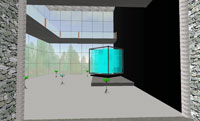
Ars Virtua Artist-in-Residence (AVAIR): Call for Proposals: Deadline November 21, 2006: Ars Virtua Gallery and New Media Center in Second Life is soliciting proposals for its artist-in-residence program. The deadline for submissions is November 21, 2006. Established and emerging artists will work within the 3d rendered environment of Second Life. Each 11-week residency will culminate in an exhibition and a community-based event. Residents will also receive a $400 stipend, training and mentorship.
Ars Virtua Artist-in-Residence (AVAIR) is an extended performance that examines what it means to reside in a place that has no physical location.
Ars Virtua presents artists with a radical alternative to "real life" galleries: 1) Since it does not physically exist artists are not limited by physics, material budgets, building codes or landlords. Their only constraints are social conventions and (malleable-extensible) software. 2) The gallery is accessible 24 hours a day to a potentially infinite number of people in every part of the world simultaneously. 3) Because of the ever evolving, flexible nature of Second Life the "audience" is a far less predictable variable than one might find a Real Life gallery. Residents will be encouraged to explore, experiment with and challenge traditional conventions of art making and distribution, value and the art market, artist and audience, space and place.
Application Process: Artists are encouraged to log in to Second Life and create an avatar BEFORE applying. Download the application requirements here: http://arsvirtua.com/residence. Finalists will be contacted for an interview. Interviews will take place from November 28-30.
23:13 Posted in Cyberart, Virtual worlds | Permalink | Comments (0) | Tags: cyberart, virtual worlds
Nov 07, 2006
[meme.garden]
re-blogged from Networked Performance

[meme.garden] by Mary Flanagan, Daniel Howe, Chris Egert, Junming Mei, and Kay Chang [meme.garden] is an Internet service that blends software art and search tool to visualize participants' interests in prevalent streams of information, encouraging browsing and interaction between users in real time, through time. Utilizing the WordNet lexical reference system from Princeton University, [meme.garden] introduces concepts of temporality, space, and empathy into a network-oriented search tool. Participants search for words which expand contextually through the use of a lexical database. English nouns, verbs, adjectives and adverbs are organized into floating synonym "seeds," each representing one underlying lexical concept. When participants "plant" their interests, each becomes a tree that "grows" over time. Each organism's leaves are linked to related streaming RSS feeds, and by interacting with their own and other participants' trees, participants create a contextual timescape in which interests can be seen growing and changing within an environment that endures.
The [meme.garden] software was created by an eclectic team of artists and scientists: Mary Flanagan, Daniel Howe, Chris Egert, Junming Mei, and Kay Chang.
23:10 Posted in Cyberart | Permalink | Comments (0) | Tags: cyberart
Nov 01, 2006
Synthecology
Re-blogged from Networked Performance
Synthecology combines the possibilities of tele-immersive collaboration with a new architecture for virtual reality sound immersion to create a environment where musicians from all locations can interactively perform and create sonic environments.
Compose, sculpt, and improvise with other musicians and artists in an ephemeral garden of sonic lifeforms. Synthecology invites visitors in this digitally fertile space to create a musical sculpture of sythesized tones and sound samples provided by web inhabitants. Upon entering the garden, each participant can pluck contributed sounds from the air and plant them, wander the garden playing their own improvisation or collaborate with other participants to create/author a new composition.
As each new 'seed' is planted and grown, sculpted and played, this garden becomes both a musical instrument and a composition to be shared with the rest of the network. Every inhabitant creates, not just as an individual composer shaping their own themes, but as a collaborator in real time who is able to improvise new soundscapes in the garden by cooperating with other avatars from diverse geographical locations.
Virtual participants are fully immersed in the garden landscape through the use of passive stereoscopic technology and spatialized audio to create a networked tele-immersive environment where all inhabitants can collaborate, socialize and play. Guests from across the globe are similarly embodied as avatars through out this environment, each experiencing the audio and visual presence of the others.

Continue to read the full post here
23:51 Posted in Cyberart | Permalink | Comments (0) | Tags: cyberart, creativity and computers
Oct 31, 2006
ENGAGE: Interaction, Art and Audience Experience
from Rhizome.org
26-28 November 2006
University of Technology, Sydney
Reduced fee early registration deadline approaching: 8 November 2006.
ENGAGE is an international symposium positioning audience experience at the heart of our understanding of interactive art. Papers will be presented by leading artists, curators and theorists exploring key issues in audience-based interactive art research.
Further information on keynote speakers, presenters, registration and contact information is available at: http://www.creativityandcognition.com/engage06/
ENGAGE is the 3rd annual symposium organised by the Creativity and Cognition Studios at the University of Technology, Sydney. Sponsorship is care of the Australasian CRC for Interaction Design (ACID), creating new forms of human interaction with emerging content technology; and the Australian Network for Art and Technology (ANAT), Australia's peak network and advocacy body for media arts.
17:47 Posted in Creativity and computers, Cyberart | Permalink | Comments (0) | Tags: cyberart
Oct 26, 2006
Smart clothing for smart users
10November 2006 - 12 November2006
Amsterdam, Mediamatic
10:00 hr, from 10.11.06 t/m 12.11.06
Oosterdokskade 5
Amsterdam
T 020 638 9901
http://www.mediamatic.net

Tiny chips, cheap sensors and the possibilities of emerging smart fabrics, conductive yarns and cheap wireless communication (bluetooth or even rfid) make wearables easier and cheaper to make. Arduino boards are small physical computing platforms: Arduino developed a fairly simple integrated development environment to deal with the small portable input/output board. With all these tools at our fingertips, nothing is stopping us from making our own smart coats, reactive hats and luminescent skirts.
To help you get started, Mediamatic is organizing a wearables workshop where you can develop your own Arduino-driven wearable. Assisted by Massimo Banzi, one of the creators of the Arduino board and several coding/soldering/sewing helpers, you have three days to make your prototype in the stimulating surroundings of the Mediamatic Winter Garden.
What?
During the workshop, you will design your own wearable. You will define the sensor inputs and the actuator outputs. You will program the Arduino board to react correctly to the different inputs. You will do this in Arduino's own IDE, which helps you write a kind of simplified Java code similar to Processing. Then you will stitch/glue/felt together your prototype so you can participate in the wearables fashion show!
Who?
Computer scientists, fashion designers, hardware hackers, art students, fabric experts, product developers, dancers- everyone is welcome. However, note that some technical affinity is required. Some experience in programming and electronics is useful, specifically in soldering and java, but not strictly necessary. We would advice participants to come in teams of max. 3 people, so you can distribute soldering, coding and sewing tasks.
Where?
The workshop will take place in the latest Mediamatic exhibition: the Winter Garden. The Winter Garden is an indoor botanical garden filled with plants and robots. From the minimalistic electronic creatures of Ralf Schreiber to the virtual forest of Michiel Samyn to the interactive plant by Christa Sommerer and
Laurent Mignonneau to the pheromone tinged garden benches of Mateusz Herczka and the communicative crickets of Felix Hess- the Winter Garden is full of wonders.
What to bring?
If there is a specific sensor or actuator you would like to use during the workshop, we advise you to bring it yourself. You can also bring the actual clothing article beforehand, and not sew it during the workshop, or you can bring fabric and other material for the base of your wearable. You'll have to bring your own laptop to do your coding, and we advise you to download the Arduino software and have a look at it beforehand. Also, bring lunch.
How to prepare?
Besides looking at the Arduino software you can have a look at the Mediamatic wearables reader - a collection of interesting articles, websites and blogposts that can get you started in the world of wearables. Virtual Platform and V2 are organizing a wearables symposium in Rotterdam called Fleshing Out the day before the Mediamatic Arduino workshop with speakers such as Ionat Zurr (SymbioticA: the art and science collaborative research laboratory), Tobie Kerridge (Royal College of Art, London) and Joanna Berzowska (Design and Computation Arts , Concordia University, Montreal).
When?
The Fleshing Out Symposium is on Thursday November 9th at V2. The Mediamatic Arduino Wearables Workshop is from Friday November 10th to Sunday November 12th. The Kiem Cuisine Wearables dinner is Friday at 19:30 at Mediamatic. The Wearables fashion show is Sunday evening at 18:00.
Costs?
The Fleshing out symposium costs 40 euros. Students receive a discount of 20 euros. The Wearable Arduino workshop costs 125 euros. Dutch students receive a discount of 50 euros.
21:50 Posted in Wearable & mobile | Permalink | Comments (0) | Tags: cyberart
EvoMUSART 2007
From Networked Performance

EvoMUSART 2007: 5th European Workshop on Evolutionary Music and Art: 11-13 April, 2007, Valencia, Spain: EVOSTAR: EVOMUSART: "ArtEscapes: Variations of Life in the Media Arts"
The use of biological inspired techniques for the development of artistic systems is a recent, exciting and significant area of research. There is a growing interest in the application of these techniques in fields such as: visual art and music generation, analysis, and interpretation; sound synthesis; architecture; video; and design.
EvoMUSART 2007 is the fifth workshop of the EvoNet working group on Evolutionary Music and Art. Following the success of previous events and the growth of interest in the field, the main goal of EvoMUSART 2007 is to bring together researchers who are using biological inspired techniques for artistic tasks, providing the opportunity to promote, present and discuss ongoing work in the area.
The workshop will be held from 11-13 April, 2007 in Valencia, Spain, as part of the Evo* event.
The event includes the exhibition "ArtEscapes: Variations of Life in the Media Arts", giving an opportunity for the presentation of evolutionary art and music. The submission of art works for the exhibition session is independent from the submission of papers.
Accepted papers will be presented orally at the workshop and included in the EvoWorkshops proceedings, published by Springer Verlag in the Lecture Notes in Computer Science series.
Further information can be found on the following pages:
Evo*2007: http://www.evostar.org
EvoMUSART2007: http://evonet.lri.fr/TikiWiki/tiki-index.php?page=EvoMUSART
21:39 Posted in Creativity and computers, Cyberart | Permalink | Comments (0) | Tags: cyberart, creativity and computers
Brain Waves Drawing
Brain Waves Drawing: Live Performance by Hideki Nakazawa: Nov 4-5, 2006 at Fuchu Art Museum, Tokyo Supported by Nihon Kohden.
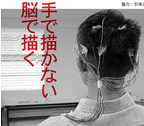
Not to Draw by Hand. To Draw by Brain: Artists usually draw pictures by hand with brushes or pencils. However, the activities of brains must be more important and essential than the ones of hands at the moment of creating art. Therefore, I decided to draw pictures with electrodes being set on my head through controlling the activities of my own brain. The curved lines so-called "brain waves" in medicine must be the "drawings" in the world of fine art, directly drawn by my brain without using hands.
21:34 Posted in Brain-computer interface, Cyberart | Permalink | Comments (0) | Tags: brain-computer interface, cyberart
Oct 08, 2006
STRP Festival 2007
|
After a successful first edition, the STRP festival, which took place in Eindhoven, Netherlands at the end of March 2006, is launching a call for projects for its next edition, which will be taking in late April of 2007. The focus of the festival is the common ground created at the intersection between art, popular culture and technology. The first edition which welcomed over 10 000 visitors, and received very positive attention from the press, made use of performances, installations, lectures, films, etcetera in order to convey this crossroads.
STRP takes place on Strijp-S, the 'holy' ground of the forbidden city of Philips, where in the 20th century numerous technological innovations were made which changed the world. A place where Einstein once worked, the first complete electronic music album was created and the collaboration between le Courboisier and Varese resulted in one of the most interesting amalgamations between art and technology, Le Poeme Electronique for the World Expo in Brussels (1958). FOR THE 2007 EDITION STRP is looking for projects, installations, or proposals that concern themselves with interactive art, robotics and/or Live Cinema (in the live cinema category we are looking for projects that rely on both performance and technology in order to become an audio-visual whole). All of the above in a context in which the artistic side is furthered by technology. This year we will also be paying special attention to projects, which involve light in their concept, composition, and/or execution. |
19:05 Posted in Positive Technology events | Permalink | Comments (0) | Tags: cyberart
Oct 07, 2006
Gamescenes
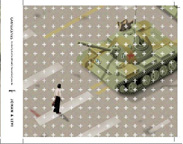
GameScenes. Art in the Age of Videogames is the first volume entirely dedicated to Game Art. Edited by Matteo Bittanti and Domenico Quaranta, GameScenes provides a detailed overview of the emerging field of Game Art, examining the complex interaction and intersection of art and videogames.
Video and computer game technologies have opened up new possibilities for artistic creation, distribution, and appreciation. In addition to projects that might conventionally be described as Internet Art, Digital Art or New Media Art, there is now a wide spectrum of work by practitioners that crosses the boundaries between various disciplines and practices. The common denominator is that all these practitioners use digital games as their tools or source of inspiration to make art. They are called Game Artists.
GameScenes explores the rapidly expanding world of Game Art in the works of over 30 international artists. Included are several milestones in this field, as well as some lesser known works. In addition to the editors' critical texts, the book contains contributions from a variety of international scholars that illustrate, explain, and contextualize the various artifacts.
M. Bittanti, D. Quaranta (editors), GameScenes. Art in the Age of Videogames, Milan, Johan & Levi 2006. Hardcover, 454 pages, 25 x 25 cm, 200+ hi-res illustrations, available from October 2006.
17:26 Posted in Cyberart | Permalink | Comments (0) | Tags: cyberart
Sep 17, 2006
Transformation of flow in rehabilitation
Transformation of flow in rehabilitation: the role of advanced communication technologies.
Behav Res Methods. 2006 May;38(2):237-44
Authors: Riva G, Castelnuovo G, Mantovani F
Authentic rehabilitation requires the active participation of patients and their involvement with opportunities for action and development. Within this framework, in this article we outline the possibility of using two emerging computing and communication technologies-ambient intelligence (AmI) and virtual reality (VR)--for a new breed of rehabilitative and clinical applications based on a strategy defined as transformation of flow. Transformation of flow is a person's ability to exploit an optimal (flow) experience to identify and use new and unexpected psychological resources as sources of involvement. We identify the feeling of presence--the feeling of being in a world that exists outside oneself--as the theoretical link between the technology and rehabilitation. AmI and VR are used to trigger broad empowerment processes induced by a strong sense of presence, leading to greater agency and control over one's actions and environment.
17:30 Posted in Cybertherapy, Virtual worlds | Permalink | Comments (0) | Tags: cyberart, virtual reality
Aug 08, 2006
The Travels of Mariko Horo
Re-blogged from Networked Performance
The Travels of Mariko Horo by Tamiko Thiel: Sometime between the 12th and the 22nd centuries Mariko HMrM, Mariko the Wanderer, journeys westward from Japan in search of the Buddhist Paradise floating in the Western Seas. She does find Paradise, but finds also a chilling, darker side to the West, an island where lost souls are held in an eternal Limbo. She encapsulates her impressions of the places she visits in a series of 3D virtual worlds and invites you to see the West through her eyes.
The Travels of Mariko is an interactive 3D virtual reality installation. The image is generated in real time on a fast gaming PC and projected on a large 9 x 12 screen to produce an immersive experience. Users move their viewpoint through the virtual environment with a joystick or similar navigational input device. Mariko is a fictitious character Thiel invented to incorporate the viewpoint for the project - users will never actually see Mariko, except perhaps in a mirror. In essence they will be Mariko, seeing the exotic and mysterious Occident through her eyes and experiences.
The virtual environment is sensitive to their presence, changing around them as a result of their movements and actions: An empty church fills with saints who vanish into the heavens. A basilica transports the user directly into the Western Cosmos, where angels sing the praises of the Goddess of Compassion. A pavilion takes users deep into the underwater realm of the Heavenly King. A plain wooden chapel leads into a Limbo of constant torment.
Music for Mariko Horo is embedded in the piece itself, localized to specific places within the 3D world. The composer Ping Jin, Professor of Music at SUNY/New Paltz, studied music both in his native China and in the USA. Ping describes the music as "creating a sonic dimension for Mariko's meditation on the mythic West. Created from both sampled and computer generated sounds, there are fusions and juxtapositions of Eastern and Western sounds to enhance the scene and mood of each section."
World premiere:
July 29 - November 26, 2006: "Edge Conditions" show, part of the Pacific Rim Theme of ISEA2006 Symposium/ZeroOne San Jose Festival at the San Jose Museum of Art, USA.
14:13 Posted in Cyberart, Virtual worlds | Permalink | Comments (0) | Tags: cyberart, virtual reality










